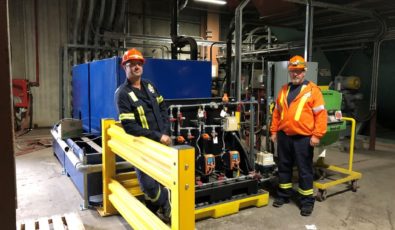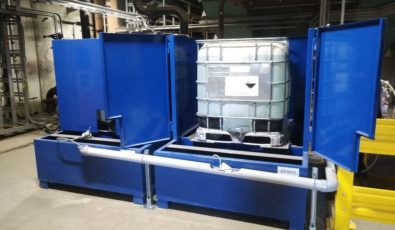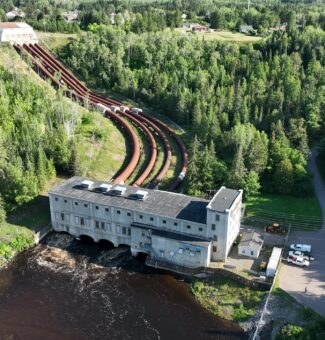Atikokan GS gets a boost from lemon juice
Northwest of Lake Superior sits Atikokan Generating Station (GS), North America’s largest 100 per cent biomass station.

The 205-megawatt station burns sustainably sourced wood pellets to generate clean electricity for about 70,000 homes, schools, businesses and hospitals. Unlike other renewable energy sources, biomass has the advantage of dispatchability, which means generation is controllable and available when needed.
In early June, lemon juice was introduced to help boost the thermal station’s performance, and the results have been anything but sour. Here’s how it works.
Water cycles through the plant to cool the hot ash produced when the pellets are burned inside the boiler’s furnace. Before the cooling water is discharged back to nearby Snow Lake, plant chemists like Jason Dragan analyze it to ensure it meets strict environmental standards.
“Our compliance with these standards is critical to maintaining our social licence to operate,” says Dragan, Atikokan’s Environment, Chemistry and Safety Supervisor.
“This isn’t lemon juice you buy from the grocery store but it’s pretty close.”Jason Dragan, Environment, Chemistry and Safety Supervisor

In efforts to keep improving the station’s environmental performance, a team of environmental technicians, chemists and plant engineers recently installed a new system that uses citric acid to boost the efficiency of the station’s flocculent – a chemical that helps remove the ash particles from the furnace ash water.
“This isn’t lemon juice you buy from the grocery store but it’s pretty close,” said Dragan. “This citric acid brings the pH of our plant water into optimal range which helps the flocculent do its job with the right dosage.”
Initial studies indicate the lemon juice is helping to enhance the station’s environmental performance.
Subscribe and stay informed
Sign up to receive the latest news, project updates, and event information from OPG.


